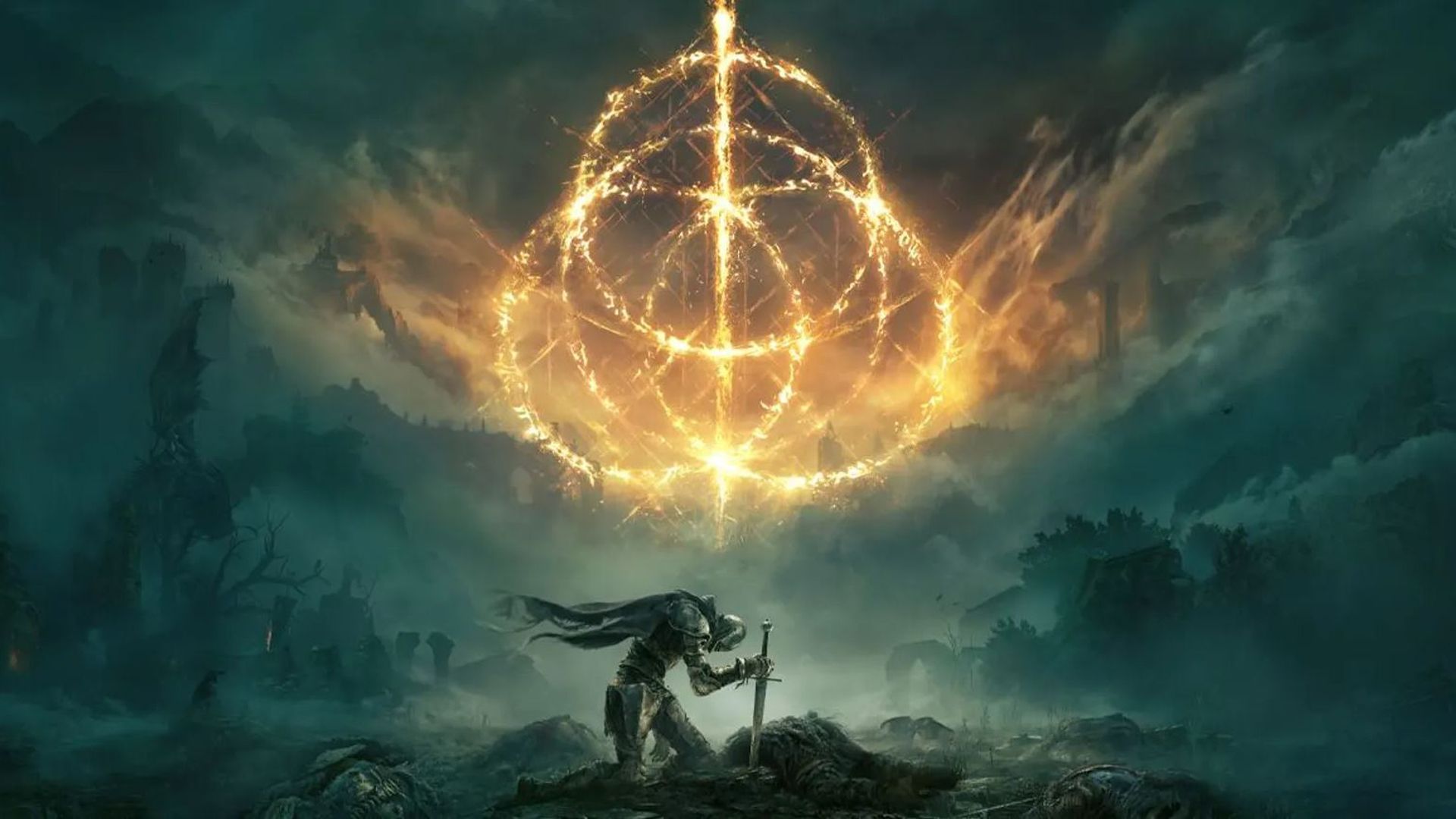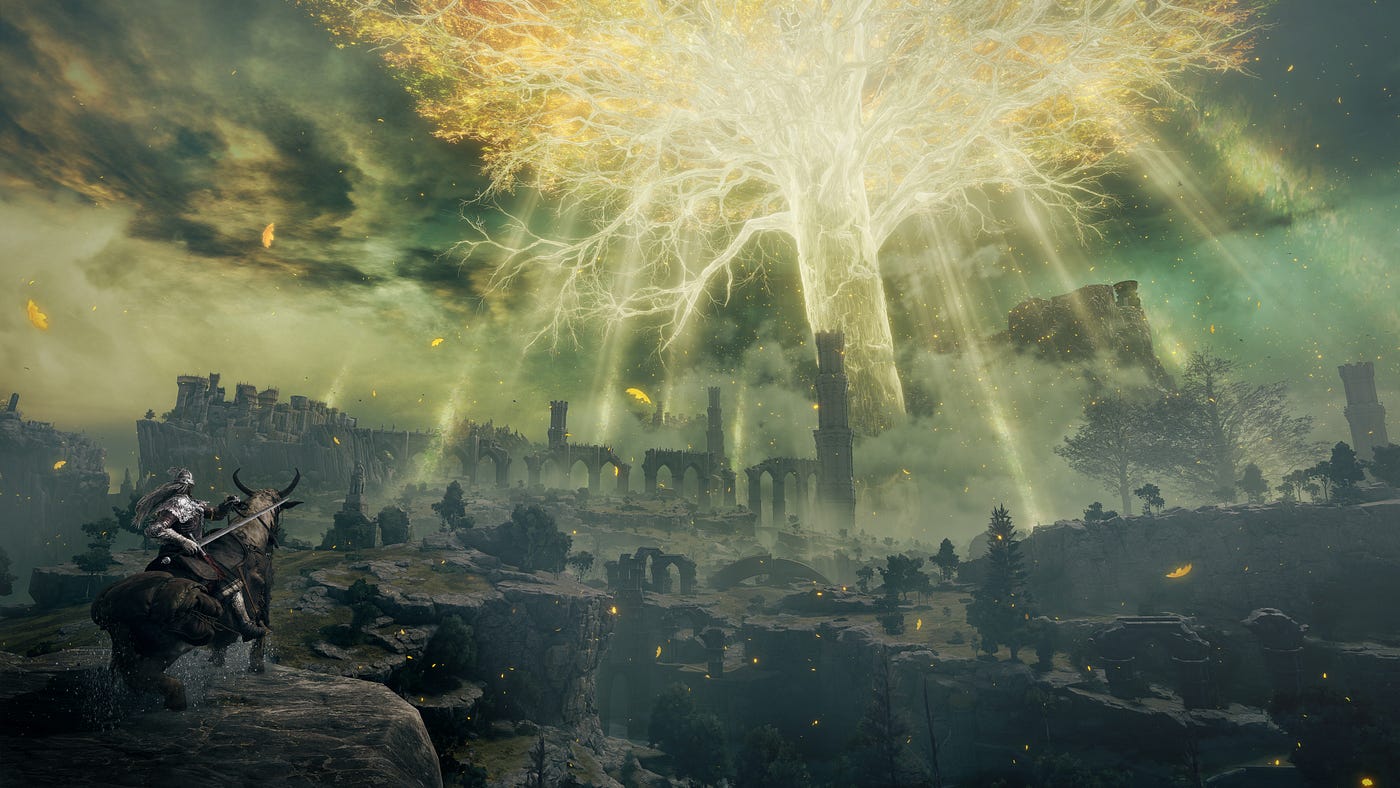The Soul of the Ring
How Hidetaka Miyazaki and Norse epic poems brought us Elden Ring

Over eight hundred years ago, The Song of the Nibelungs was written. Originally an oral tradition of epic stories and poems, the Nibelunglied (and its fellows, the Poetic Edda, Prose Edda, and and Volsunga Saga) would go on to influenced popular culture in myriad ways, from the The Ring of the Nibelung cycle to The Lord of the Rings and even the modern epic Berserk. The adventurous heroics of the Nibelunglied echo so strongly throughout artistic media that we have come to see their wide-spread influence as common Norse mainstays. The Eddas themselves, written not long after The Song of the Nibelungs by Snorri Sturluson, are categorically our reference to the Icelandic epic tradition as a whole — almost everything we know about modern Norse mythology stems from them.
“The Tarnished will soon return…” [via the Elden Ring trailer]

A Familiar Tale
After an agonizing (but expected) wait, Elden Ring has been shown for the first time. No longer a storied existence belonging to nothing more than a simple teaser trailer (and years of fan theories and Dark Souls fueled speculation), Elden Ring is real. The newest iteration of Hidetaka Miyazaki’s playable nightmares, this entry by From Software is co-penned by George R.R. Martin of A Song of Ice and Fire fame, yet another series inspired in part by the epic Norse sagas.
If you’ve been a fan of video games — especially the RPG — for any length of time, there is no doubt that you’ve experienced some of the influence of the Eddas and their epic saga. Snakes as big as worlds, enormous trees, golden rings (the four interlinked rings that garnish Elden Ring’s title are themselves evocative of the Four Lords from Dark Souls), valkyries (the tall, phantom-limbed, crimson-locked woman featured in the trailers gives off strong Brunhild vibes), runes, dwarfs, magic. Gwyn, the dastardly father of gods and half-gods from Dark Souls, bears the likeness of Odin.
The mythology of the Norse is one that is endlessly interesting, its aesthetics forever gleanable by contemporary artists. While typically presented for their inherent darkness and evil, there is a complexity to the wiles of the Norse tradition that lends itself so well to the grimdark fantasy genre. Miyazaki (along with his brilliant and hard-working cohorts at From Software) have long borrowed the influence of the Eddas, the Nibelunglied, and Der Ring des Nibelungen for their dark fantasy epics, which in many ways feel like the new oral tradition started before the Norse texts were even conceived.

Modern Mythology
While the domino pipeline of epic proto-germanic folklore tradition to newest open world video game might sound dramatic on paper, this is exactly how artistic influence works. Miyazaki and his team, inspired by the Norse tradition, have unveiled a game that feels like not only the culmination of what they have learned from Demon’s Souls, Dark Souls, Bloodborne and Sekiro, but the next step in their personal journey to bring us an artistic wonderland, a colorful misery world filled with screaming wolf-men, tall valkyrie women, and murderous dragons.
Anyone who has spent the last decade playing Dark Souls and its many influences does not need to be told why these games are special. In fact, it is only outliers that don’t seem to grasp what it is about the Souls games that make them so irresistible. To put aside the absurdity of the “git gud” mentality and the idea that Dark Souls is nothing but a franchise for masochists, any Souls fan will tell you that this is not why they prefer to live in Miyazaki’s dark worlds. Dark Souls, from aesthetic to mechanics to artistic design, is special. It is a series that feels wholly original while also building upon the games that came before it, each entry a stepping stone towards greatness.
More so than any other From Software entry, Elden Ring fully wears its Norse inspirations on its sleeve. From its icon of interlinked golden rings to its project name of “Great Rune,” Elden Ring has been crafted by Martin and Miyazaki to feel like we are playing through their ultimate version of the Eddas, with enough From Software flair to make all us depraved Souls fans weep for joy. In the past we have been treated to characters such as the great wolf Sif, named after the earth goddess and stylized like the creature of Ragnarok, Fenrir. The cycle of living and dying that permeates the Souls series is also very reminiscent of the designs of the Eddas, where Norse gods are both very powerful but very mortal. From Software deities and patrons are denizens of this philosophy, and there are few beings throughout the games that can withstand death, no matter how powerful they might seem.

The Culmination of Vision
Elden Ring carries the design influences of Dark Souls with fair ease in its newest trailer, showcasing a world that is easily recognizable to fans and enticing for newcomers. For the first time ever the series will allow players to cruise a world on horseback, fighting demons and dragons in an entirely new way. It also has a multiplayer aspect that goes far beyond the traditional invasion mechanics and phantom-summoning — it seems as though Elden Ring may be the cooperative experience that fans have been clamoring after for years. Here, too, we are presented with a stylized inception of the oral tradition, not passing down epic poems but sharing in a greater sense of adventure, crafting our own experiences within the dark world presented to us by Miyazaki and Martin.
Similar to the Cursed Undead and Ashen Ones of previous games, Elden Ring calls players “the Tarnished,” and they are tasked with overcoming a world of ruin and strife as they attempt to survive in this hellish landscape.
From the Elden Ring, splash page:
The Golden Order has been broken.
Rise, Tarnished, and be guided by grace to brandish the power of the Elden Ring and become an Elden Lord in the Lands Between.
In the Lands Between ruled by Queen Marika the Eternal, the Elden Ring, the source of the Erdtree, has been shattered.
Marika’s offspring, demigods all, claimed the shards of the Elden Ring known as the Great Runes, and the mad taint of their newfound strength triggered a war: The Shattering. A war that meant abandonment by the Greater Will.
And now the guidance of grace will be brought to the Tarnished who were spurned by the grace of gold and exiled from the Lands Between. Ye dead who yet live, your grace long lost, follow the path to the Lands Between beyond the foggy sea to stand before the Elden Ring.
And become the Elden Lord.
Again, Elden Ring’s connections to Norse mythology seem more than skin deep, with iconography such as the Ring of the Nibelungs (Elden Ring) and Yggdrasil (Erdtree) alongside the Great Runes and an apocalyptic war, The Shattering. The Tarnished (another call to rings) are exiles of these lands, wayward spirits who are not humans and are not gods, but something else. What we know of the full game is slight, but the possibility of playing a From Software game with more open-world leanings, such as non-linear exploration and a grander scope, are tantalizing. It boggles the mind to think of how Miyazaki and his co-writer Martin might re-establish the Souls Easter egg lore hunt within this brand new experience.
Thankfully, the wait is not long.
Elden Ring releases January 21, 2022.
“Brandish the Elden Ring…for all of us.”
